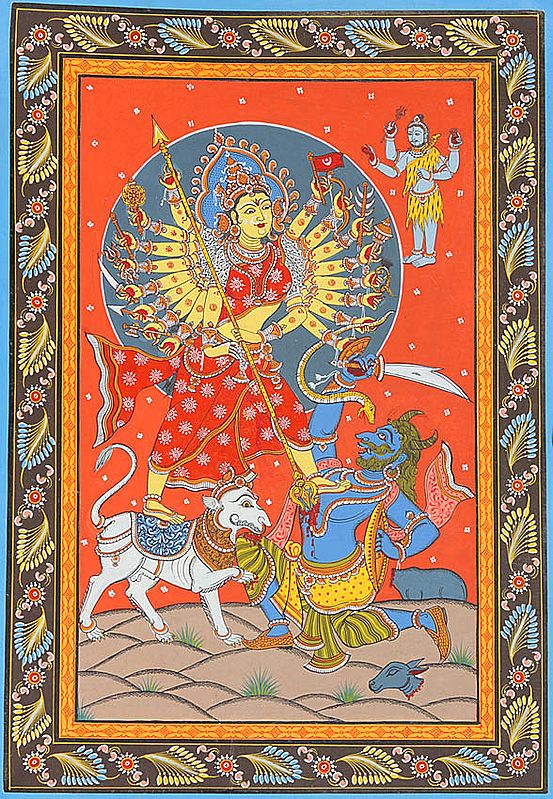This pata-chitra painting, rendered using cloth with paper pasted on it as its canvas, and all basic colours used without shading and with a look of pastel colours comprising its palette, a characteristic Oriya art idiom, represents the eighteen-armed
Goddess Durga killing the buffalo-demon Mahisha. The representation is superb in capturing the motion articulating in the body of the Goddess. Figure's entire anatomy, body’s every limb, each muscle and demeanour portray the force and energy that reveal in the body of the goddess when she charges at the mighty demon Mahisha whose terror had horrified the worlds of men and gods alike. The lion-riding goddess seems to have put her entire force into the trident she has shot onto Mahisha’s breast. Exactly as described in Chapter 46 of the Shiva Maha Purana, with great force the goddess has pushed the demon with her left foot and pierced his breast with her massive trident, though in variation to the scripture, Mahisha’s human form does not appear to be emerging from the body of the buffalo. Buffalo’s decapitated body, severed head and torso, is separately painted. The icon of Shiva, painted on the left corner, does not have much relevance in the painting except perhaps emphasising the legend’s link with the Shiva Maha Purana, or the Devi’s, with Shiva.
The legend of Mahisha’s elimination by Durga is perhaps her most popular exploit. It has given her the epithet Mahishasura-Mardini. In her form as Mahishasura-Mardini her aesthetic beauty better reveals for it combines with the beauty of form also the beauty of sublime force. Perhaps for such reasons, Mahishasura-Mardini is her most widely represented form in any visual medium and any kind of art, spiritual, secular or votive. Clad in typical Orissa costume and ornaments and conceived with characteristic Oriya iconographic form, on the Devi’s face reflects her determination to punish the demon for his misdeeds. The buffalo demon Mahisha has been represented in human form though with horns on his head, deep blue body-colour, and a repulsive face, besides a buffalo-form, a severed head and torso, symbolic of his buffalo lineage, painted around his human form. The eighteen-armed Devi is carrying in her various hands a trident-cum-spear, rod, vajra, battle-axe, khanda, flag, noose, wheel, mace, arrow, sword, shield, serpent, conch, lotus and bow.
Chapter 46 of the Maha Shiva Purana narrates the legend of Durga eliminating demon Mahisha, literally meaning buffalo. Mahisha, the son of Rambha, head of a mighty demon clan, who had begot him of a female buffalo, once ruled the earth. As the legend has it, after long rigorous penance the childless Rambha was blessed by Agni – the fire-god, to have a son by the female he first met, enamoured and wedded. On his way back, he encountered a she-buffalo and captivated by her beauty fell in love and married her. The she-buffalo bore him a son who looked like half buffalo and half human being. He was named Mahisha. Highly ambitious, Mahisha performed great penance and won from Brahma the boon of invincibility against all males. This made the highly ambitious Mahisha, also arrogant and atrocious.
Not merely that the entire earth fell under his yoke, Mahisha also invaded heaven, defeated Indra and all gods and forced them to flee. Indra and other gods approach Brahma who revealed on them that under a boon from him Mahisha was invincible against all males and hence they could not defeat him. On Brahma’s advice and along with him they approached Vishnu and Shiva and narrated to them how Mahisha had usurped not merely their land but under his patronage his demons had usurped also their functions. With faces radiating like fire enraged Shiva and Vishnu looked into the sky which began glowing with the radiance of many suns. All gods also saw skywards and the glow that their faces emitted also blended with that of Shiva and Vishnu. Gods commemorated Durga and instantly the radiance revealing from their faces transformed into the form of a female divinity. Each of them blended into her form his attribute and gave her his weapon. After her form had fully evolved, the goddess laughed and with its thunderous voice shook all three worlds. Mahisha too heard it and with crores of his warriors rushed into the direction the voice was coming from. Here the goddess confronted him and in a fierce war killed him and his entire army.
This description by Prof. P.C. Jain and Dr. Daljeet. Prof. Jain
specializes on the aesthetics of literature and is the author of
numerous books on Indian art and culture. Dr. Daljeet is the
curator of the Miniature Painting Gallery, National Museum, New
Delhi. They have both collaborated together on a number of
books.
Free Shipping. Delivered by  to all international destinations within 3 to 5 days, fully insured.
to all international destinations within 3 to 5 days, fully insured.
Mastering the Ancient Technique: Exploring the Meticulous Creation of Pattachitra Paintings
The traditional Pattachitra is a scroll painting that is done on
cloth. This is revealed in the name; Pattachitra is a Sanskrit
term made from two words i.e. Patta meaning cloth and Chitra
meaning picture. The main subject of this painting is portraying
Hindu mythological narratives, scenes from religious texts, and
folktales. Pattachitra paintings are especially practiced in
eastern Indian states such as West Bengal and Odisha, and also in
some parts of Bangladesh. This art form is closely related to Shri
Jagannath and the tradition of the Vaishnava sect. It is believed
that Pattachitra art originated in the 11th century and the people
of Odisha practice it even today without any discrepancy. Bengalis
use these scroll paintings for ritual purposes (as a visual
device) during the performance of a song or Aarti.
Pattachitra paintings are characterized by creative and
traditional motifs/designs, decorative borders, and bright
colorful applications. The outline of the figure and motifs are
bold and sharp. Some common shapes and motifs seen in these
paintings are trees, flowers, leaves, elephants, and other
creatures. The artists of Odisha and Bengal still use the
traditional method of painting which gives a unique look to it
altogether.
1. Canvas is prepared
The process of painting a Pattachitra begins by preparing the
canvas (patta). Generally, cotton cloth is used for making the
canvas. The local artists dip the cotton cloth in a mixture of
tamarind seeds and water for a few days. The cloth is then taken
out and dried in the sun. Now natural gum is applied over it to
stick another layer of cotton cloth on it. Thus a thick layer of
cotton cloth is formed. This layered cotton is sun-dried and a
paste of chalk powder, tamarind, and gum is applied on both
sides. The surface of the cloth is then rubbed with two
different stones for smoothening and it is again dried. This
process gives the cloth a leathery finish and it is now ready to
be painted.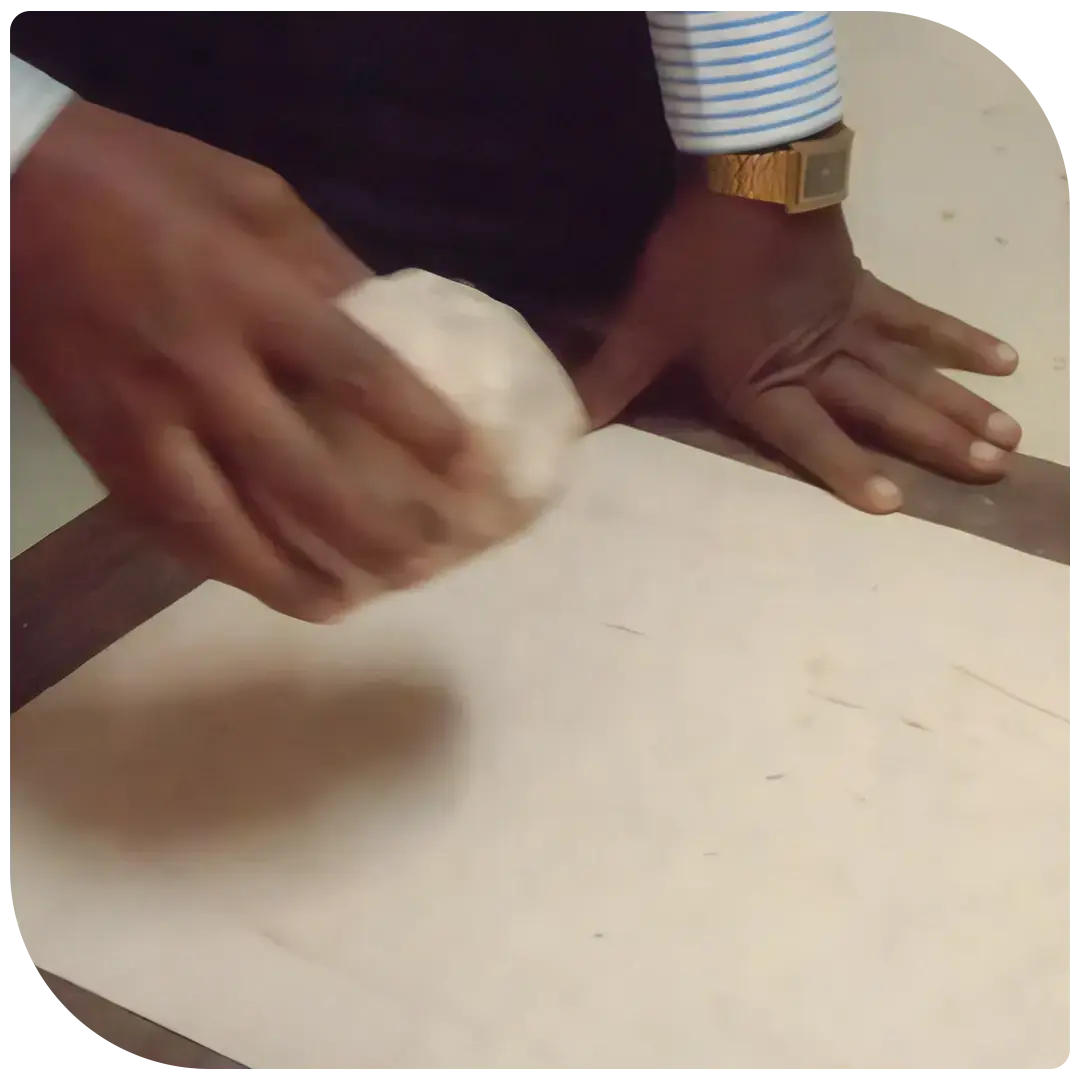
2. Natural colors are made using traditional method
The painters prepare and use vegetable and mineral colors for
application in the painting. White color is made from conch
shells, black is made by burning coconut shells, Hingula is used
for red color, Ramaraja for blue, and Haritala for yellow.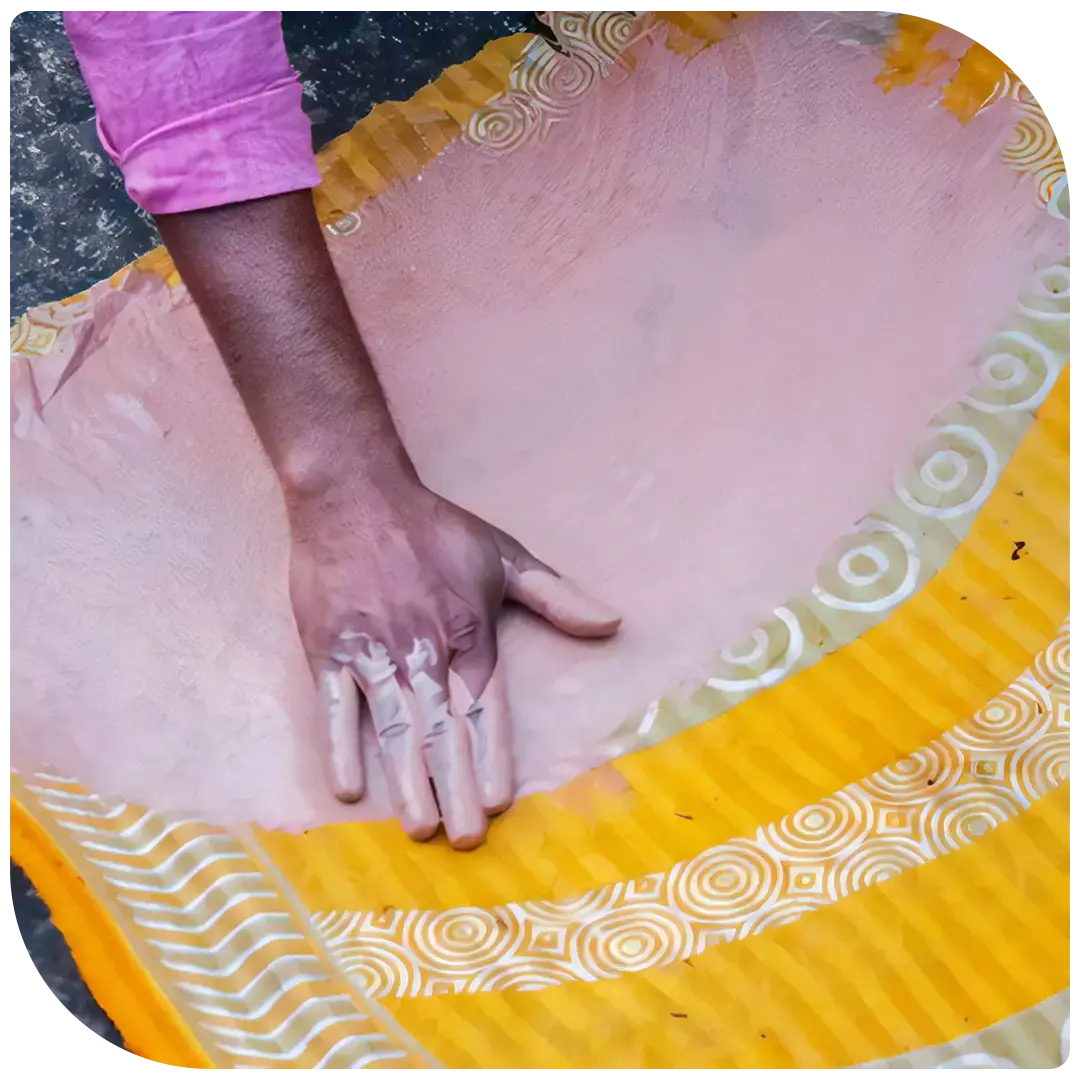
3. Colors are filled in
The artist now makes a double-lined border on all four sides of
the canvas. The local artists are so expert in painting that
they do not draw figures and motifs with pencil but directly
draw them with a brush. The paint brushes that the painters use
are made of the hair of domestic animals, a bunch of which is
tied to the end of a bamboo stick. The figures are now painted
with natural colors using the indigenous brushes. The outline is
thickened with black color.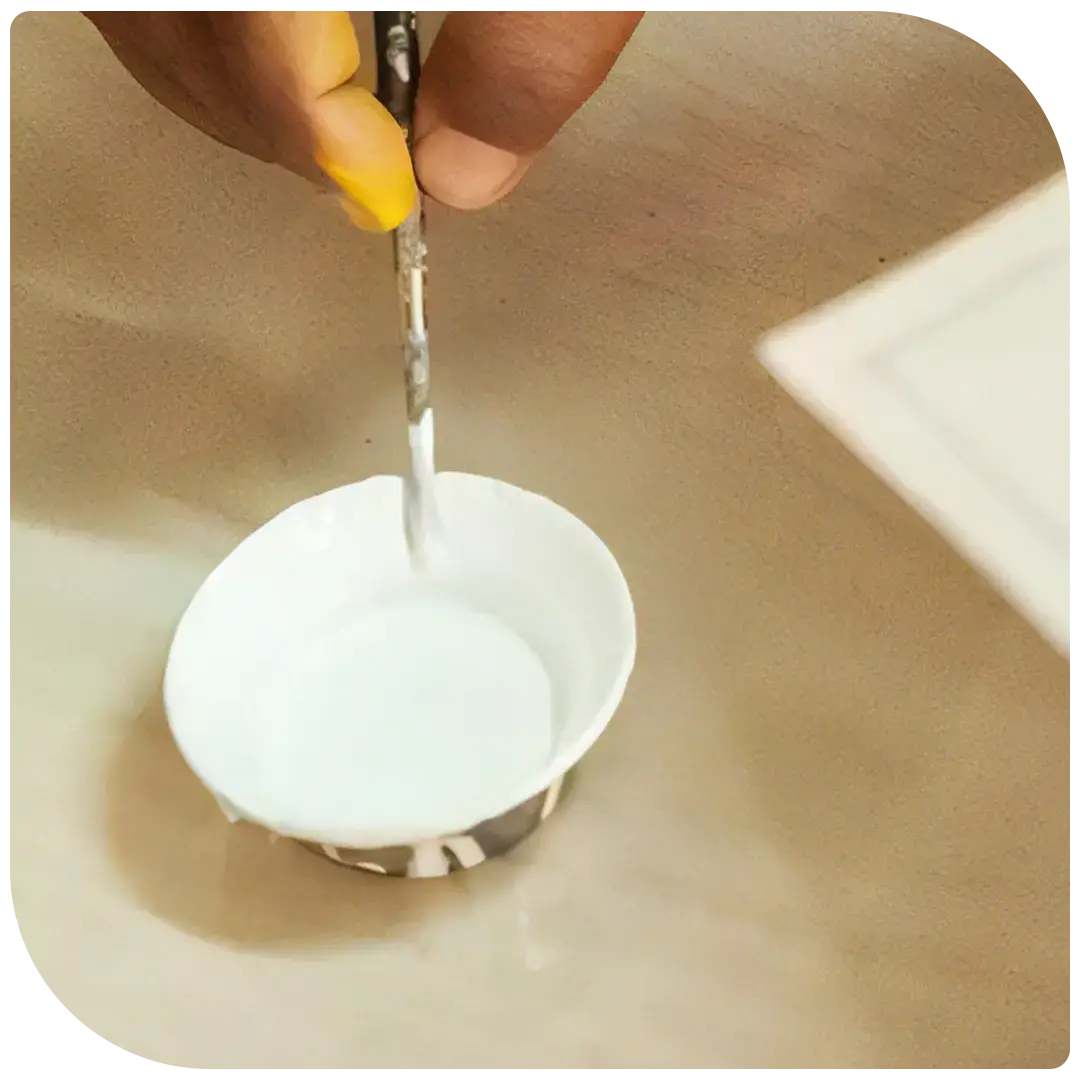
4. Painting is given a finishing
Finally, the painting is varnished/glazed to protect it from any
damage and to get a glossy shine on the surface.
The making of a Pattachitra is laborious work and therefore, one
painting may sometimes take over a month to complete. Due to their
classical look, these paintings are admired by people from all
over the world. The artistic skills used in Pattachitra are passed
down from one generation to another and thus are preserved to
date.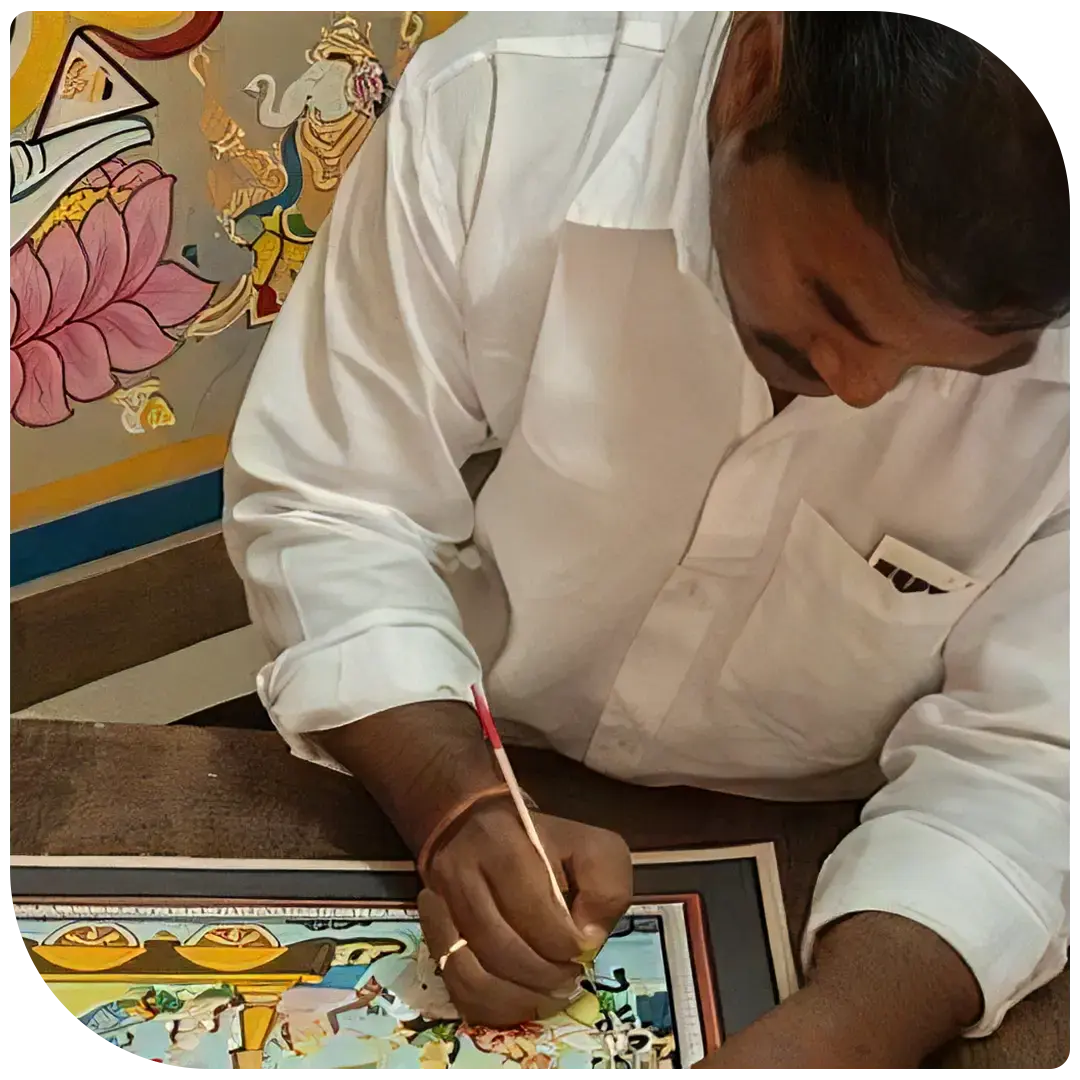

 to all international destinations within 3 to 5 days, fully insured.
to all international destinations within 3 to 5 days, fully insured.



